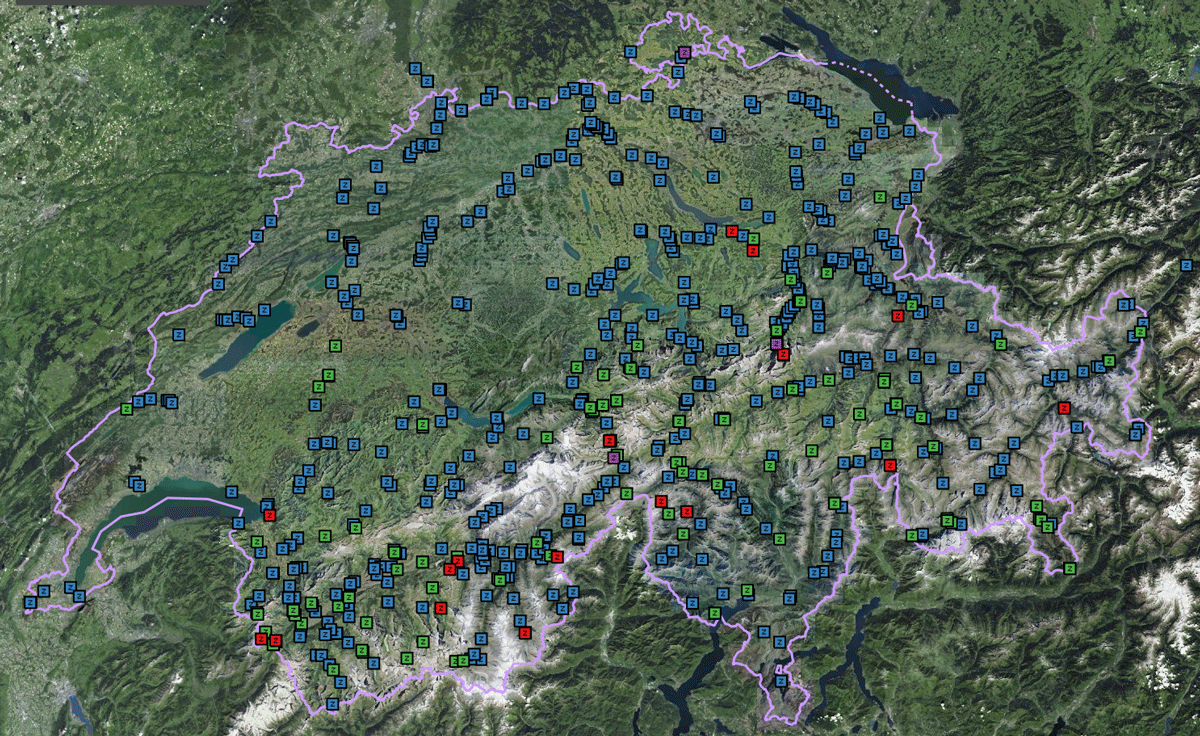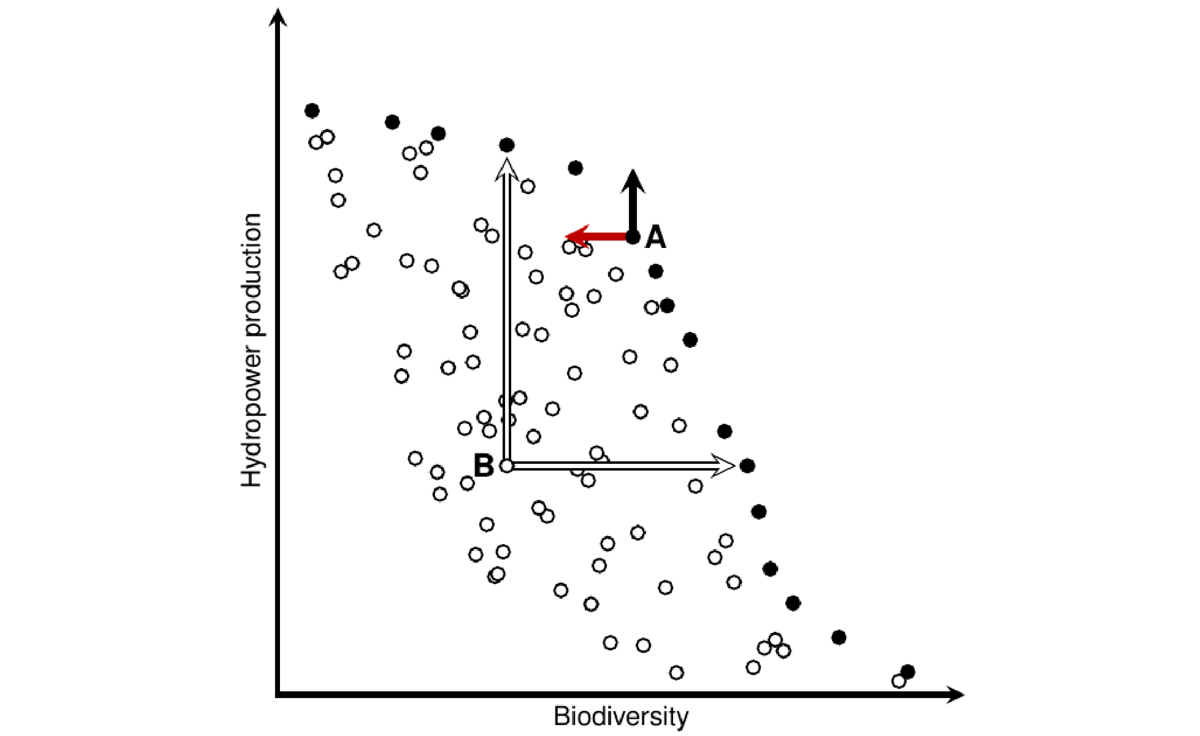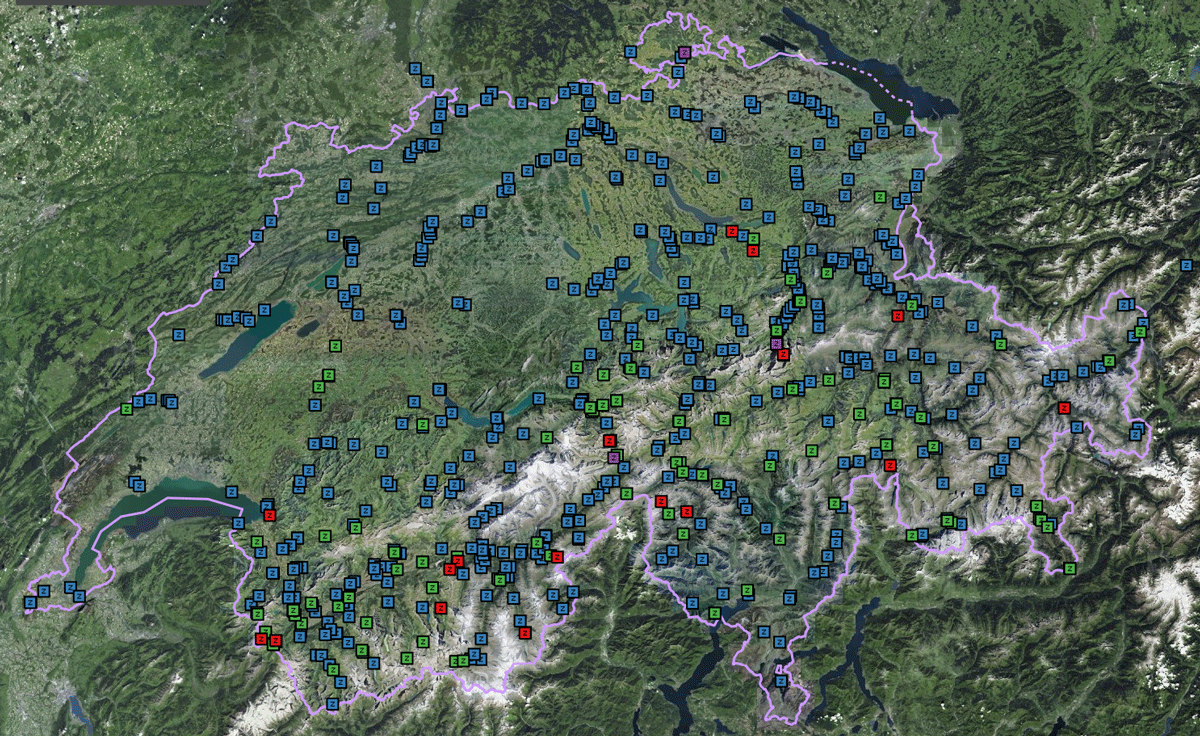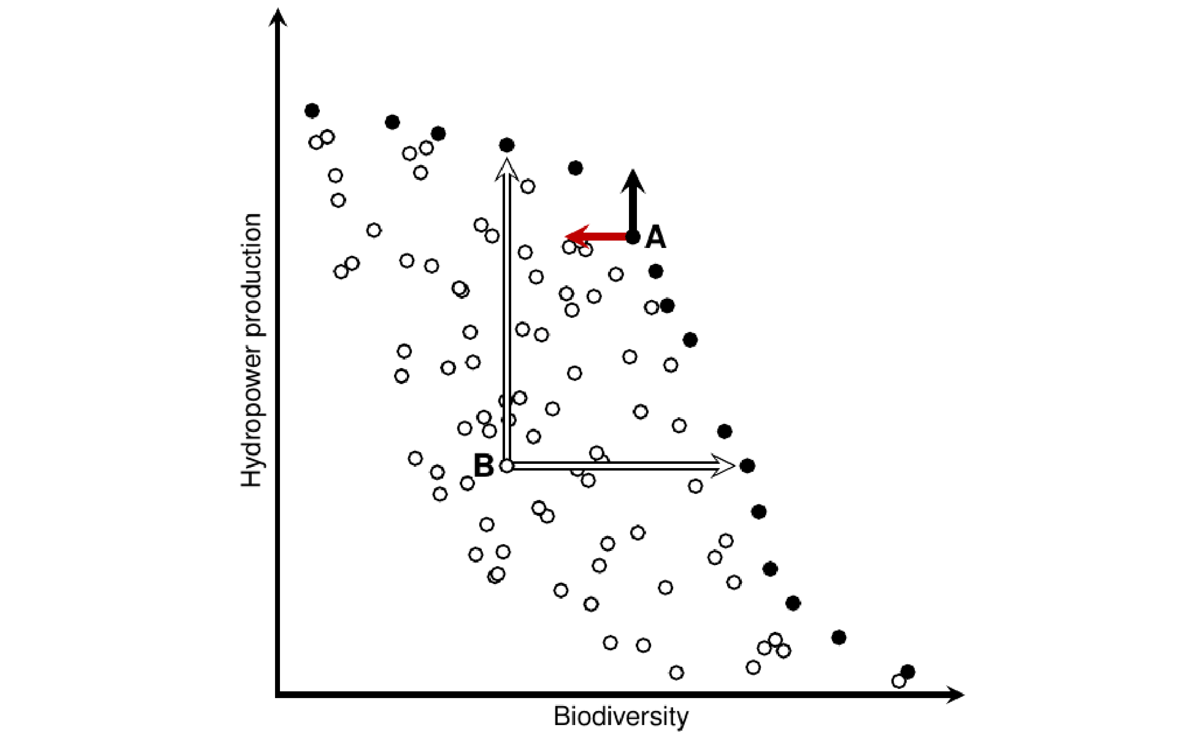Small hydropower and happy fish?!
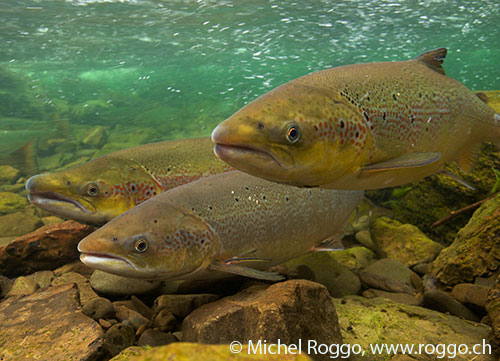
November 2017 - by Philipp Meier and Katharina Lange
Globally, the construction of small hydropower plants is booming. This fuels further habitat fragmentation and degradation, putting even more pressure on freshwater biodiversity. Biodiversity, especially genetic diversity, is one of our greatest assets to combat impacts from global change, allowing organisms to adapt to altering environmental conditions. Careful planning can support us in finding hydropower sites that offer highest electricity production at the smallest cost for biodiversity.
An increasing electricity demand coupled with the need to reduce greenhouse gas emissions force us to expand the share of renewable energies. Therefore, efforts to develop the remaining hydropower potential have intensified. In Switzerland, the hydropower potential of the larger rivers is already mostly exploited. There is hardly a valley in the Swiss Alps, which does not have some structure to divert or store water for hydropower. As a consequence, new projects are mostly small power plants with an installed capacity of less than 10 megawatts. This means that for achieving a substantial increase in electricity production, a large number of such power plants needs to be built. This will further increase pressure on our last pristine alpine rivers.
What will happen if we build hydropower plants in the remaining places?
The short answer is: we do not know. As usual, the long answer is more complex. The construction of multiple small hydropower plants within a river basin may cause their impacts to accumulate, such as the loss of unique habitats and river fragmentation by dams.
Diverting water for a power plant reduces discharge and flow dynamics over many river kilometres. In Switzerland, about 2’700 of the 65’000 river kilometres were turned into such residual flow reaches. In alpine regions, these residual flow reaches are situated in steep terrain. Many species that live and strive in such steep alpine rivers are well adapted to high currents and a flashy flow regime. By degrading these special habitats, we will lose these locally adapted populations.
Trout are the most common fish in Swiss alpine rivers. Our assessment of the ecological impacts of eight small run-of-river hydropower plants (learn more) showed that trout were skinnier in the residual flow reaches. Insect larvae that live on the river bed, and that are central players for the provision of ecosystem services, may also be affected by habitat degradation. So far, we also don’t know how far these impacts propagate downstream, after natural discharge is restored.
The density and location of multiple hydropower plants define the length of isolated river reaches and thus the size of fish populations. The smaller genetic diversity of isolated populations reduces the capacity of these to adapt to changing environmental conditions. Isolation may also lead to local or even basin-wide extinctions. Some fish species need to have access to different habitats for spawning, rearing and foraging, e.g. Swiss trout often spawn in the headwaters and then migrate down to the main river or a lake for foraging. Such species-specific habitat requirements will need to be considered if we want to sustain large and healthy fish populations.
How to identify new suitable locations?
Today, when selecting suitable locations for new hydropower plants, basin-scale effects and cumulated effects are usually not considered. This is partly due to the lack of methods evaluating the complex interactions between the degree of fragmentation, population dynamics and life history requirements. In addition, it is important to compare the position of each hydropower plant within the river basin with alternative sites based on economic gains and costs for biodiversity.
A number of ecological assessment methods with regard to the position of hydropower plants within river networks have been proposed. These methods usually rely on an optimisation procedure. The services an ecosystem provides, such as biodiversity or fishing, can usually not be expressed in monetary units. Therefore, the trade-off between the highest amount of electricity produced and the least impact on ecosystem services needs to be established explicitly.
At Eawag, we are currently developing a spatially explicit planning tool that tracks the viability of a species given a specific configuration of hydropower plants within a river network. This tool relies on an optimisation method to establish so-called Pareto-optimal solutions (see figure). Within a set of Pareto-optimal solutions, one objective, such as hydropower production, can only be increased at the expense of at least one other objective, e.g. biodiversity. Such a set of explicit solutions can assist stakeholders and decision makers to negotiate a good compromise between different interests.
Authors

Philipp Meier has worked at Eawag until recently and is supporting the development of a spatially explicit planning tool, which will be implemented for a Swiss river catchment. Katharina Lange at Eawag is assessing the ecological and evolutionary impacts of small run-of-river hydropower plants in Swiss rivers.

